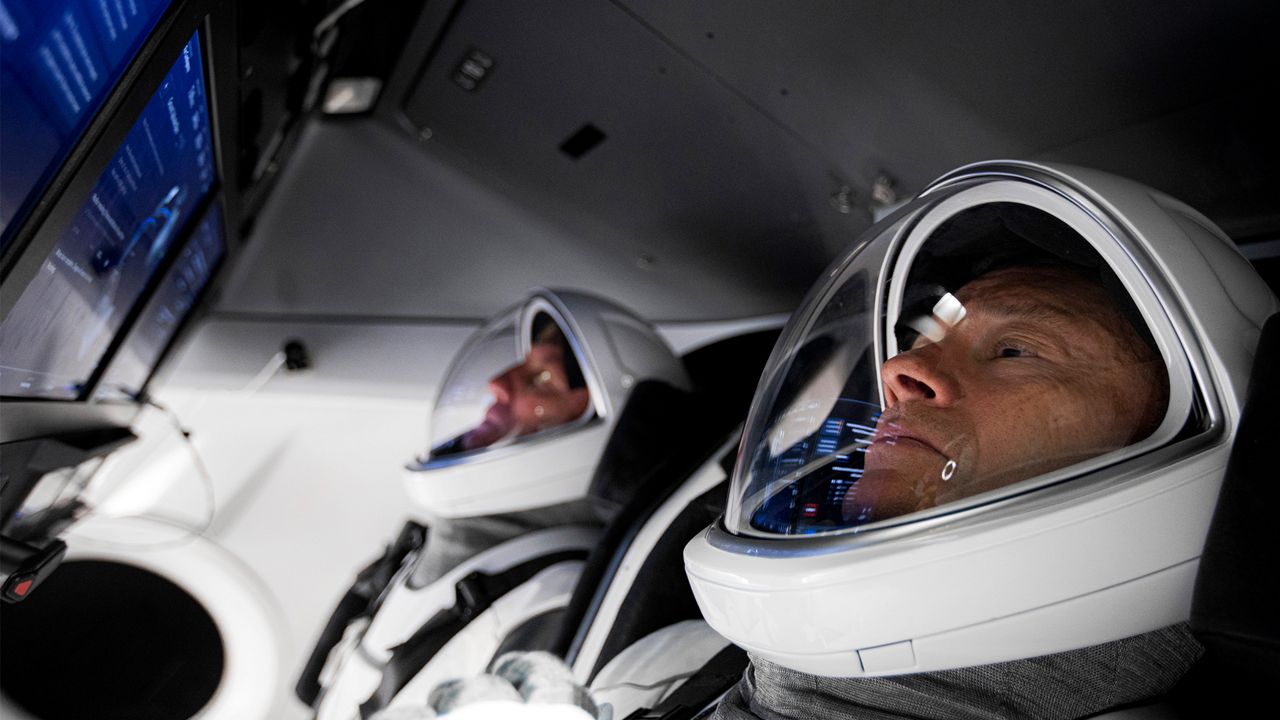BREVARD COUNTY, Fla. – A game of space rocket chicken ended on Monday, somewhat predictably, with NASA’s moon-class rocket needs taking priority over the launch of private astronauts to the International Space Station.
During a media teleconference primarily focused on NASA’s Fiscal Year 2023 budget request, NASA Associate Administrator Bob Cabana said that the final big test for the Space Launch System rocket and Orion crew capsule will bump the launch date of four private astronauts on behalf of Axiom Space.
The test, known as wet dress rehearsal, includes a demonstration by crews at NASA’s Kennedy Space Center to load and drain the cryogenic fuel, which will be used to power the SLS rocket when it sends the uncrewed Orion spacecraft on a lunar journey before it returns to Earth.
Streaming of the operation is set to begin on Friday, April 1, at noon Eastern Daylight Time when crew members report to their stations. The test will wrap up with the propellant loading and a simulated countdown on Sunday, April 3.
The Ax-1 mission had also been scheduled to launch on April 3, but will now launch no earlier than Wednesday, April 6.
During a March 25 teleconference following the flight readiness review of the Ax-1 mission launch, Dana Weigel, the deputy manager for NASA’s ISS Program said that there was a multi-day buffer of launch times for the Ax-1 mission.
Also in consideration is the launch of three NASA astronauts and one European Space Agency (ESA) astronaut who make up the Crew-4 mission to the ISS. That’s scheduled to launch on April 19.
This will be the fourth certified crew rotation flown by SpaceX to the orbiting outpost. The Ax-1 mission will separate from the ISS at least two days prior to the launch of Crew-4.
Kathy Lueders, the associate administrator for NASA’s Space Operations Mission Directorate, said that “SLS has the range” and took precedence when it came to the tossup between the wet dress rehearsal and the launch of Ax-1, but added that the Axiom/SpaceX launch team is in close communication with those on the NASA side.
“There’s a lot of shared resources between [Launch Complexes] 39A and 39B and they coordinate daily to make sure that we get an optimum schedule for both of us,” said Bill Gerstenmaier, the vice president of the Office of Build and Flight Reliability at SpaceX.
He said on Friday that they expected to get a better idea from the launch directors of the respective launch pads what the optimal plan would be. LC-39A supports crew launches on SpaceX’s Falcon 9 rocket and Crew Dragon capsule. Its neighbor to the north is LC-39B, which was refurbished to handle launches of the SLS rocket for the Artemis Program.
The Ax-1 mission will send four private astronauts to the Space Station for a 10-day total mission. The Dragon spacecraft will be docked with the ISS for eight of those days, during which the crew will conduct around 25 science missions before splashing back down off the coast of Florida.
Former NASA astronaut Michael López-Alegría is the commander of the mission, which also includes Pilot Larry Connor, founder of real estate investment firm The Connor Group; Mission Specialist Mark Pathy, a Canadian entrepreneur and philanthropist; and Mission Specialist Eytan Stibbe, a former Israeli Air Force fighter pilot and current impact investor and philanthropist.




